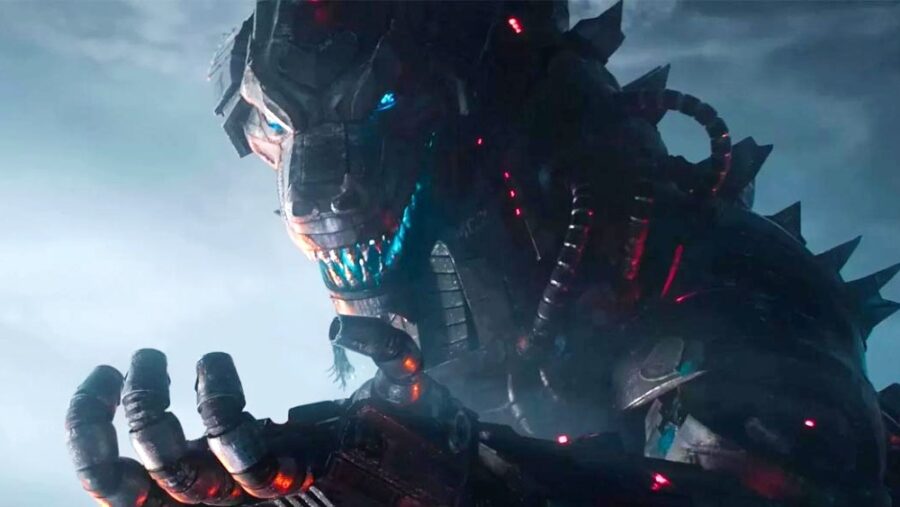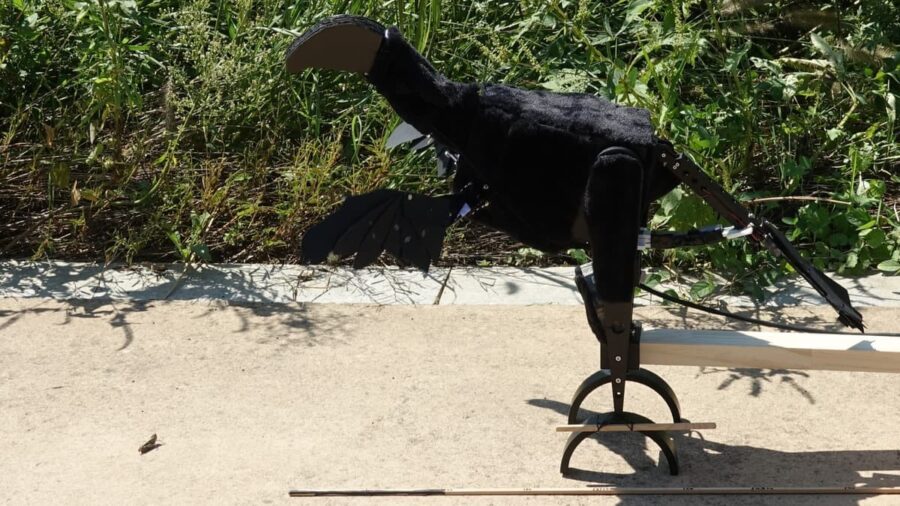Robot Dinosaurs Unleashed In Wild Experiment

In a move that combines two of Michael Crichton’s greatest works, scientists have released robot dinosaurs into the wild for experimental purposes. The move, which sounds like it was pulled straight from the opening act of a slasher film, was done as a means to demonstrate dinosaur hunting techniques, confirming long-held theories about fossil patterns. Videos of the hulking robot dinosaur have been shared to YouTube, including one which shows the enormous creature spooking an unsuspecting grasshopper with the flapping of its mighty wings.
Luckily, the robot dinosaurs in question are large and rather unwieldy, meaning humans living near the so-called hunting grounds don’t have to fear that their lives will become a combination of Jurassic Park and Westworld in the near future.
Scientists created a robot dinosaur experiment to answer why some dinosaurs had wings long before evolution allowed them to fly.
The dinosaurs, which scientists have recreated with robot parts are of the Pennaraptora group, which contain raptor-like prehistoric birds with claws protruding from their wings. Researchers have long been puzzled over the use of these feathered wings, which still adorn the features of modern birds to this day.
In order to finally put their concerns to rest regarding the use of the Pennaraptora wings, a team of engineers from Seoul National University in South Korea created robot dinosaurs with specs as similar to the real thing as they could estimate to replicate the behavior of the creatures out in the wild.
This allowed researchers to confirm that the wings were primarily used to glide short distances after hopping out of trees or other high areas without offering the ability to fully fly.

This was a theory carried by scientists for ages, due to the existence of fossils indicating feathered wings with not nearly enough strength to lift certain genera of Pennaraptora off the ground. However, the robot dinosaurs offered even further insight into the hunting patterns of Pennaraptora species, which researchers now believe to have eaten similarly to modern roadrunners.
Flush-Pursuit Foraging
Roadrunners, and perhaps Pennaraptora, hunt via a method called flush-pursuit foraging by flapping their wings with enough vigor to scare their prey from hiding places high and low.
This is why the video of the robot dinosaurs scaring the grasshoppers is so significant, as it serves to demonstrate this hunting strategy. Of course, the giant obsidian structure on wheels offers little confirmation of this fact, as any large creature moving in this manner would likely inspire a grasshopper to head for the hills.
Still, the research conducted by the Seoul National University team showed that 93 percent of grasshoppers responded to the proto-wing flapping, while only 47 percent fled when the wings remained still.
To further solidify this data, findings seemed to show that grasshoppers were far more likely to flee when the robot dinosaurs had white patches on their wings or flapping feathers on their tails.
As scientists continue to probe the prehistoric records for data on dinosaur bone structures, engineers have continued to push the boundaries of what’s possible in our modern technological landscape, allowing for further advancements of this kind. By this time next year, we may very well have our own robot dinosaur sanctuary, complete with an annual evacuation when the robe-rex comes barreling out of its quarters and into an awaiting crowd.
Source: Nature












